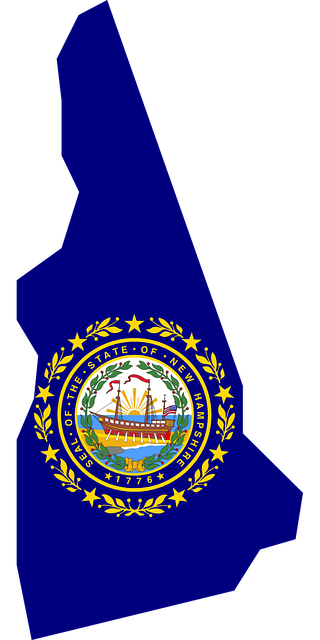Share This Article:

Do You Know the Rule?
Fall protection might come to mind when you think about people who work on trees, but as Simply Research subscribers know, places like New Hampshire have rules for some much more.
Here's a look at the Granite State's safety rules for those who work in, on, and around trees.
Head Protection
Head protection shall be worn by workers engaged in tree operations. The head protection worn shall contain the manufacturer’s certification that it complies with ANSI Z89.1-1981 with revisions. When working in proximity to electrical lines, the head protection worn shall contain the manufacturer’s certification that it is a Class B hard hat which complies with ANSI Z89.1-1981 with revisions.
Belts and Saddles
Safety belts, tree-trimming saddle belts, or a saddle formed by a double bowline on a bight shall be worn to protect workers above ground level.
Saddle belts or safety belts used for climbing operations shall have forged support rings. Snaps used in climbing ropes or in safety straps, for attachment to the forged support ring, shall be of self-closing safety type. Forged support rings shall be designed so that the snaps will not become disengaged, or roll off accidentally.
Climbing Ropes
Climbing ropes shall be used when working aloft in trees. Manila ropes shall have minimum diameter of 1/2 inch 12 mm and shall be 3 or 4 strand first-grade manila, with a rated breaking strength of 2385 pounds or equivalent strength and durability. Synthetic rope shall have a maximum elasticity of not more than 7 percent.
Climbing ropes shall not be used to lower limbs or other parts of trees, or to raise or lower equipment.
Chaps
The employer shall provide, and the employee shall use, chaps specifically designed to foul a moving chain whenever chain saws are used.
Power Lines
All employees shall be instructed in the hazards associated with working in close proximity to overhead power lines.
It shall be the responsibility of a competent person, as defined by Lab 1402.01, to determine whether tree care operations can be safely performed near energized power lines.
Rescue Procedures
Rescue procedures for employees working above ground shall be established by the employer, and the employees trained accordingly.
Equipment
Brush chipper access panels for maintenance and adjustment shall be closed and secured prior to operation of brush chippers.
Each rotary drum tree or brush chipper or disk-type tree or brush chipper not equipped with a mechanical in-feed system shall be equipped with an in-feed hopper not less than 85 inches 2.15 m, measured from the blades or knives to ground level over the centerline of the hopper, and shall have sufficient height on its side members so as to prevent personnel from contacting the blades or knives of the machine during normal operations.
Each disk-type tree or brush chipper equipped with a mechanical in-feed system shall have a quick stop and reversing device on the in-feed. The activating lever for the quick stop and reversing device shall be located across the top, along each side of, and as close to the feed end of the in-feed hopper as practicable and within easy reach of the operator.
Equipment on which workers stand and spray while the vehicle is in motion shall be equipped with guardrails around the working area.
When using portable powered brush cutting saws no one except the operator shall be within 10 feet (3m) of the cutting head of the brush saw.
The power unit shall be equipped with a quick shutoff switch readily accessible to the operator.
When chainsaws are operated the manufacturer’s operating and safety instructions shall be followed.
Chain saw used by employees shall be equipped with a properly adjusted inertia chain brake designed to stop the chain rotation in the event of a saw kickback.
Chain saws weighing more than 15 pounds 6.8 kg that are used in trees shall be supported by a separate line, except when used from an aerial-lift device.
The engine shall be stopped when power saws are being carried. The saw shall not need to be stopped between cuts during consecutive felling, bucking, or climbing or cutting operations on level ground. The chain shall not be turning and the operator’s hand shall be off the throttle lever while operators move between work locations. One-person saws shall be carried by the worker on her side with the guide bar of the saw pointed to the rear. A two-person saw shall be carried by 2 workers.
The engine shall be stopped for all cleaning, refueling, adjustments, and repairs to the saw or motor where practical, except where manufacturer’s procedures require otherwise.
california case management case management focus claims compensability compliance courts covid do you know the rule emotions exclusive remedy florida FMLA fraud glossary check Healthcare health care hr homeroom insurance insurers iowa leadership medical NCCI new jersey new york ohio osha pennsylvania roadmap Safety state info technology texas violence WDYT west virginia what do you think women's history women's history month workcompcollege workers' comp 101 workers' recovery Workplace Safety Workplace Violence
Read Also
About The Author
About The Author
-
Frank Ferreri
Frank Ferreri, M.A., J.D. covers workers' compensation legal issues. He has published books, articles, and other material on multiple areas of employment, insurance, and disability law. Frank received his master's degree from the University of South Florida and juris doctor from the University of Florida Levin College of Law. Frank encourages everyone to consider helping out the Kind Souls Foundation and Kids' Chance of America.
More by This Author
Read More
- Apr 20, 2025
- Claire Muselman
- Apr 19, 2025
- Chris Parker
- Apr 18, 2025
- Claire Muselman
- Apr 18, 2025
- Liz Carey
- Apr 18, 2025
- Claire Muselman
- Apr 18, 2025
- Chris Parker




